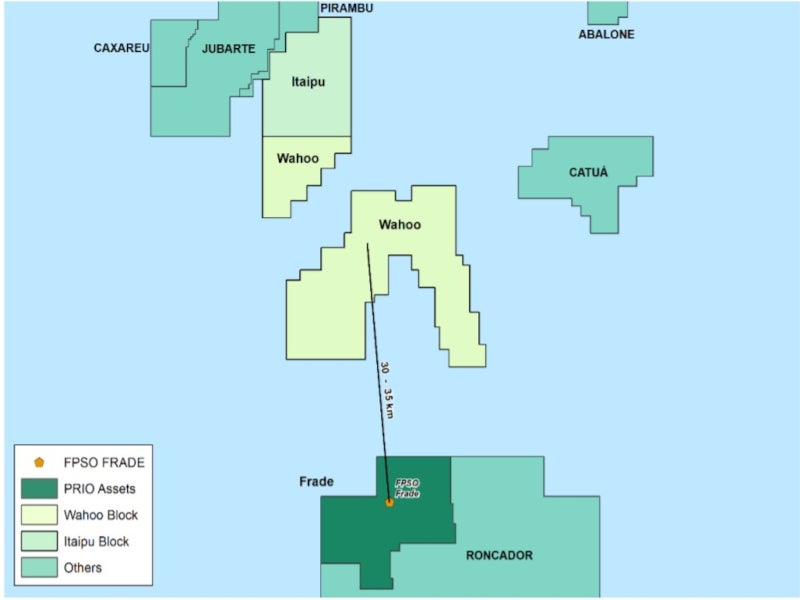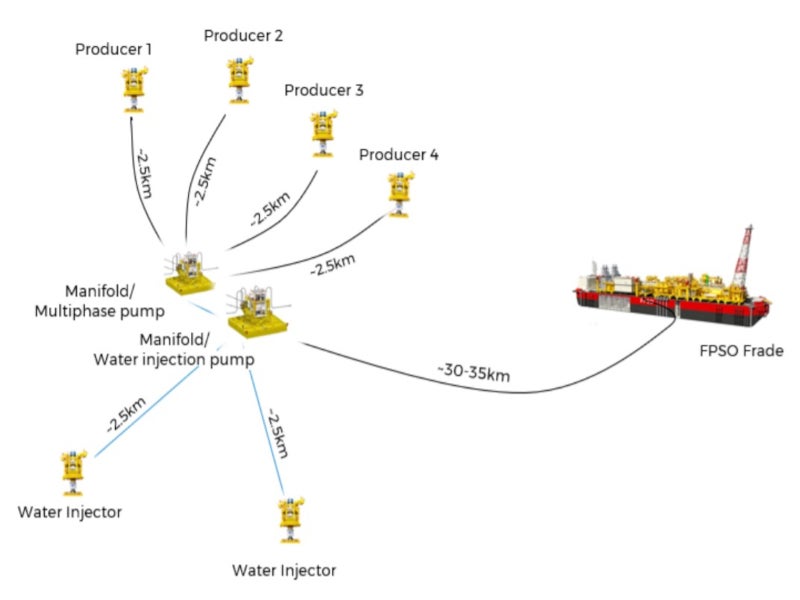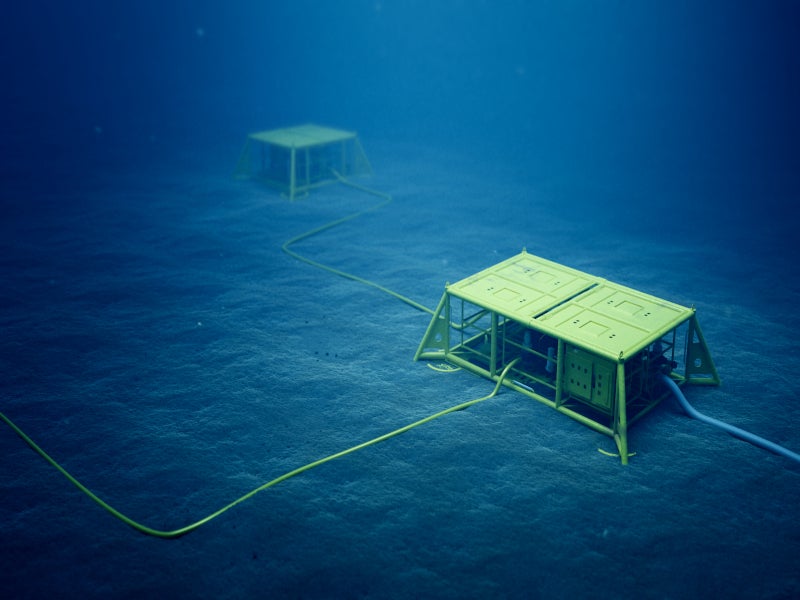Wahoo field is located at a water depth of about 1,400m (4,600ft approximately), from 30km to 35km north of the Frade field in Block C-M-101 in Campos Basin, offshore Brazil.
BP, an oil and gas company based in the UK, purchased the field from Devon Energy, a US-based energy company, as part of its transaction for the acquisition of Devon Energy do Brasil, the entity of Devon Energy that holds the interest in the block, in May 2011.
PetroRio, a Brazilian oil and gas company, acquired a 35.7% stake in the field from BP Energy do Brasil, a subsidiary of BP, in November 2020, with the transaction completed in June 2021. PetroRio acquired an additional 28.6% interest in the field from BP’s partner in the field – Total E&P do Brasil, a subsidiary of TotalEnergies, in March 2021 raising its total stake in the field to 64.3%. The transaction was closed in July 2021. Banco Safra and Scotiabank were the financial advisors for the transaction.
PetroRio became the operator of the Wahoo field after securing the required approvals from Brazil’s oil and gas regulator, the National Agency of Petroleum, Natural Gas and Biofuels (ANP).
It filed a development plan and a declaration of commerciality for the Wahoo field with ANP in December 2021. First production from the field is expected in early 2024.
Wahoo field geology and discovery details
The Wahoo field has a carbonate reservoir located at a depth ranging between 5,000m and 7,000m at the pre-salt layer with the potential to produce more than 140 million barrels of hydrocarbons.
The field was discovered by the then operator Anadarko Petroleum, an oil and gas company based in the US, in the deep-water Campos basin, using the Deepwater Millennium drillship in 2008.
The company drilled four wells in the Wahoo reservoir and discovered oil from three wells. Further formation tests were carried out in 2010. The oil in the field was found to be of excellent quality with 30º API and low viscosity.
Anadarko sold its stake in the Wahoo discovery to BP and TotalEnergies (formerly Total) in 2018.
The 2C contingent resources in the Wahoo field are estimated to be 107.9 million metric barrels of oil (Mmbbl). The average expected initial production from the field is estimated to be more than 10,000 barrels a day from each well, which translates to a daily production of 40,000 barrels.
Development details
The Wahoo field will be developed as a production cluster sharing infrastructure with the Frade oil and gas field. The shared infrastructure is expected to significantly reduce development expenses while maintaining safety and efficiency.
The development of the production cluster is a part of PetroRio’s strategy to optimise the use of the existing infrastructure and minimise geological risks.
The field will be developed with the drilling of four producer wells and two injector wells. The wells will be connected to the subsea manifold with multi-phase pumps to enable the flow of produced oil and injected water. The subsea manifolds will be installed approximately 2.5km away from the wells and will be tied back to the existing Frade floating production storage and offloading (FPSO) vessel located between 30km and 35km from the field.
The Wahoo development project will extend the lifespan of the Frade infrastructure, while pushing back the abandonment of the Frade-Wahoo cluster from 2034 to 2054.
Investment details
The capital expenditure on the project is estimated to be approximately $800m, including $360m for the drilling of the wells, $300m for the tieback, $100m for the deployment of the subsea equipment, and $40m for the modifications to the Frade FPSO and other items for the tieback.
Contractors involved
Ocyan Drilling, a Brazilian company, received a contract from PetroRio to provide its Norbe VI drilling rig for the revitalisation campaign of the Frade field and the development of the Wahoo field.






